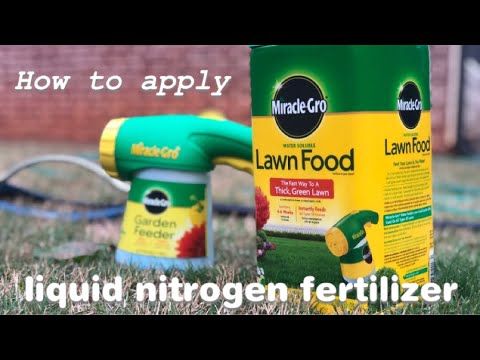Miracle-Gro is one of the most popular and widely available chemical fertilizer brands on the market. Its water-soluble plant foods and shake-and-feed granules can be found in most home improvement stores and garden centers. But is the nitrogen content in Miracle Grow too high? Let’s take an in-depth look.
What is Miracle Grow?
Miracle-Gro is a synthetic fertilizer produced by Scotts Miracle-Gro Company It contains nitrogen, phosphorus, and potassium (NPK) derived from chemicals rather than organic sources
The most common Miracle-Gro products are:
-
Water soluble powders – Dissolve in water and apply as a nutrient solution
-
Shake ‘n Feed – Granules spread around plants and watered in.
-
Spikes – Inserted into soil for slow nutrient release.
-
Potting mixes – Blended with soil for container plants.
All Miracle-Gro fertilizers are highly concentrated and provide an immediate nutrient boost when applied correctly. They help stimulate rapid growth and brighter blooms.
NPK Ratios in Miracle Grow Products
The NPK ratio listed on a fertilizer bag or bottle tells you the percentage of each key nutrient it contains.
For example, Miracle-Gro Water Soluble All Purpose Plant Food has an NPK ratio of 24-8-16. This means it contains:
- 24% nitrogen
- 8% phosphorus
- 16% potassium
Other common NPK ratios found in Miracle Grow plant foods include:
- 20-20-20
- 15-30-15
- 10-52-10
- 12-4-8
So yes, most Miracle Grow products are relatively high in nitrogen compared to other nutrients. The high nitrogen promotes lush vegetative growth.
Is the Nitrogen Level Problematic?
Such high nitrogen levels aren’t necessarily bad on their own. Nitrogen is needed for healthy plant growth and photosynthesis.
However, there are some potential downsides to such nitrogen-heavy formulas:
-
Growth over flavor – High nitrogen can spur leafy growth at the expense of fruit or vegetable quality and taste. Too much can diminish sweetness and flavor.
-
Leggy growth – Excess nitrogen without adequate phosphorus or potassium can cause weak, leggy growth in seedlings and transplants.
-
Pollution – Heavy nitrogen fertilizers contribute to algae blooms, dead zones, and pollution when they run off into waterways. Much gets wasted.
-
Soil health – Synthetic nitrogen doesn’t feed soil microbiology. And over-application can accumulate as salts, damaging soil structure.
-
Dependency – Plants “spoiled” with frequent high nitrogen feeding can become dependent on it to look good and perform well.
So while the nitrogen content itself isn’t necessarily bad, it does need to be applied carefully and strategically. Overdoing nitrogen is quite possible with Miracle Grow.
Alternatives to High Nitrogen Fertilizers
If you want to avoid excessive nitrogen, there are a few options:
-
Organic fertilizers – Derived from plant and animal sources, these provide a wider array of nutrients. Release is slower and less likely to burn plants.
-
Balanced synthetic fertilizers – Look for more equal NPK ratios like 10-10-10 or 5-5-5 synthetic blends. These prevent nitrogen overload.
-
Targeted or custom blends – Use formulas specific to the needs of vegetables (higher P) or blooming plants (higher K). Don’t use one-size-fits-all.
-
Soil amendments – Compost, manure, kelp, and organic matter add nutrients more slowly and gently.
-
Cover crops – Growing nitrogen-fixing cover crops naturally provides nitrogen to the soil without chemicals.
The Bottom Line
Miracle Grow fertilizers can certainly deliver results when used as directed. However, their high nitrogen formulations aren’t best practice for every situation.
To prevent nitrogen overloads, use Miracle Grow strategicially only where needed. Supplement with organic soil building and look for more balanced NPK ratios when possible. Avoid overapplying.
Like anything, you can have too much of a good thing with nitrogen fertilizers. But used judiciously and in moderation, Miracle Grow can provide benefits if applied carefully according to label directions. Just beware its nitrogen-heavy tilt.
OUR FAVORITE ORGANIC FERTILIZERS for gardening ARE:
- homemade or good locally-sourced Compost + Compost Tea
- Kelp Meal
- Mycorrhizal Fungi Inoculant (technically not a fertilizer, but it’s the #1 important ingredient I use during planting to inoculate the soil with beneficial fungi).
- Alfalfa Meal
- Leaf Mulch or Shredded Leaves: This isn’t fertilizer, but learning how to use leaf mulch will add a lot of organic matter, earthworms, and microbes to your garden. Over time, these living things will break down the leaves into plant nutrients that you can use. Those are pretty much all the things you’ll ever need for your garden. Find out more about how to apply
So, the biggest question is… Do you give a damn?
If you do, then I encourage you to spend your money like you do. Feed your plants like you give a damn. Feed yourself and your family like you give a damn. You’re obviously reading this because you give a damn, right?.
The greatest thing we can do is educate ourselves and share knowledge with others in a respectful way. I’ve written many other blog posts to help you garden healthfully – see some of the links below.
This Common Fertilizer Mistake Is RUINING Your Garden’s Productivity!
FAQ
How much nitrogen is in Miracle-Gro?
What is the downside of Miracle Grow?
What is better than Miracle-Gro?

